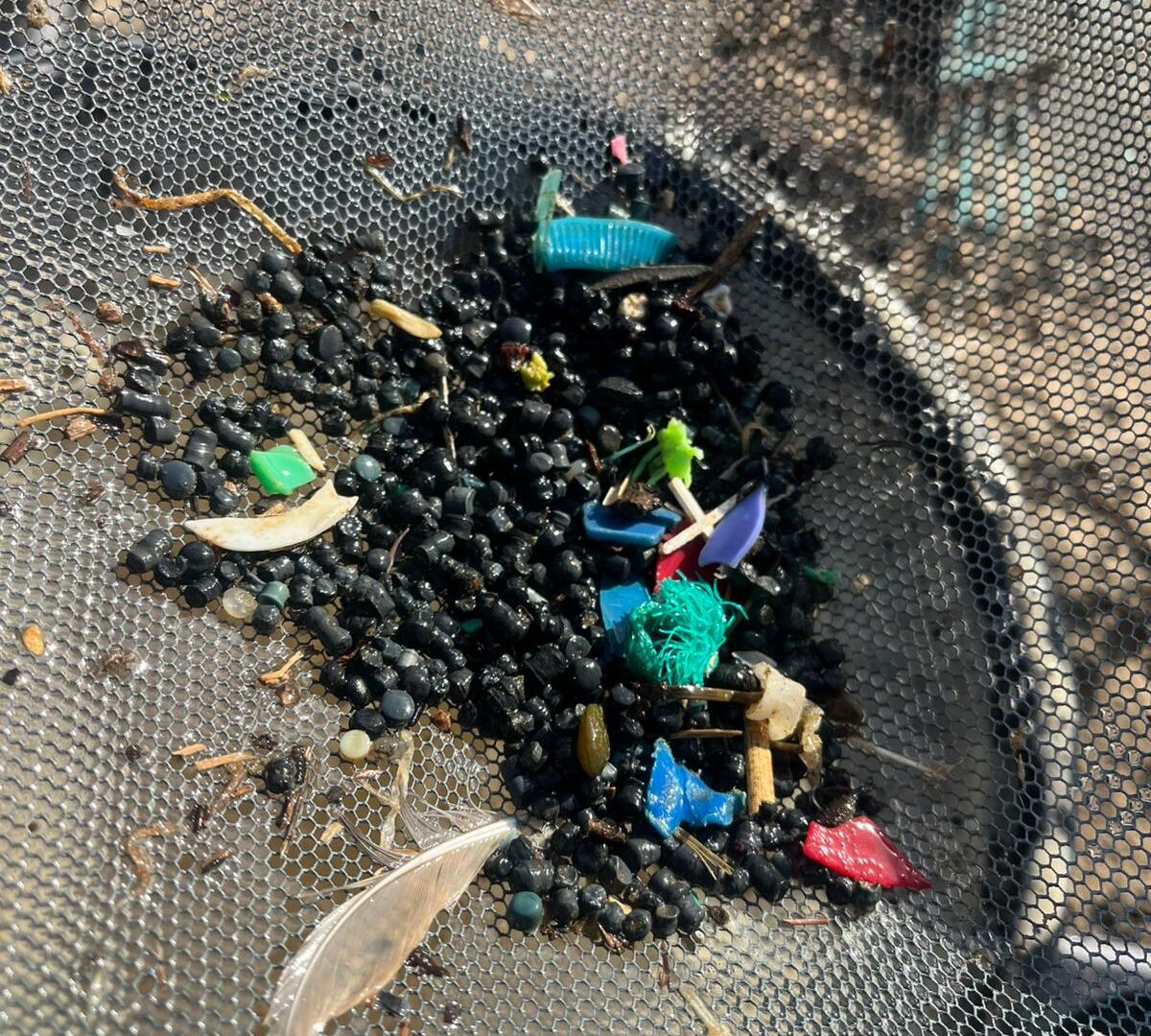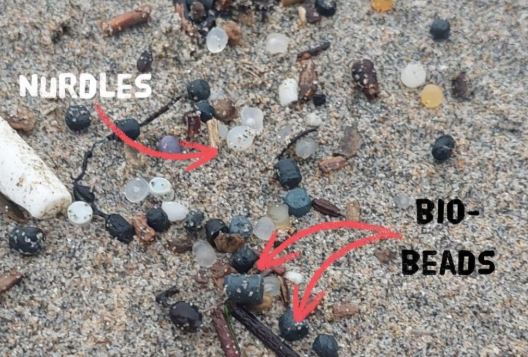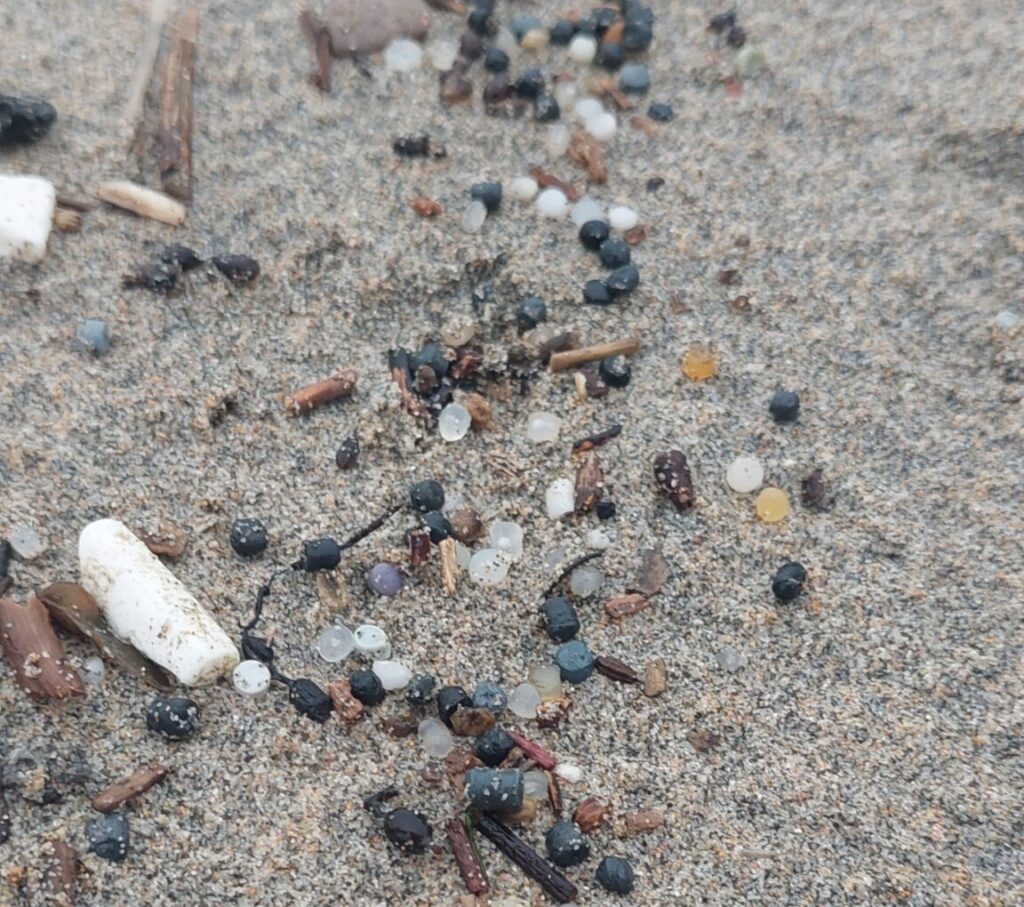
What are Bio-beads?
Small plastic pellets and discs are washing up across the UK, from Camber Sands in Sussex, to South Wales and now Lyme Regis in Dorset. With volunteers and local councils left to largely to deal with the clean-up. They are the product of two broken systems. Water companies and a lack of regulation around plastics, which are devastatingly persistent and harmful to our environment. Water companies have been spilling them for years, and these microplastics are all too common finds for our communities.
What are bio-beads?
Bio-beads are a type of small plastic pellet used by UK water companies as part of the wastewater treatment process. They’re small size vs rough surfaces are designed to encourage bacterial growth, by creating a biofilm that can biologically clean waste water. They are just one of a number of different types of plastic Biological Aerated Flooded Filter (BAFF) media used by water companies. Some are very small pellets, called bio-beads. Some are a bit larger, like plastic discs or hollow cylinders. But they all do the same thing. They are held in reactor tanks, with mesh screens holding them in.
New EU regulations in the 1990s meant newly privatised water companies had to overhaul their infrastructure to meet the new requirements. Plastic BAFF media was hailed as the perfect solution . BAFF plants needed less space than other sites and reduce costs– which is great for coastal locations. Some of these sites are now over 30 years old. You can see how a perfect storm has been brewing.
Bio-beads vs nurdles
While Bio-beads look similar to nurdles (also known as mermaid tears), they are not the same. Nurdles are smooth, oval or round pre-production or virgin plastics that’s used to make new plastic products, these are often clear, white or bright colours. Bio-beads are irregular, rough, cylindrical pellets – often blue, black, grey or white.

What is the impact of bio-beads?
Bio-beads are the most prolific type of BAFF media pollution. Their very small size means clean-up is incredibly hard. And when mixed with seaweed and other organic matter, near impossible. Some spills in the UK have resulted in BILLIONS of these entering our environment. They are now a common occurrence not just in the UK, but Europe too. Not content with just polluting our own waters, bio-beads from UK water companies have been found polluting the Netherlands.

Their buoyancy and size mean that these floating pellets can be mistaken for food and ingested by birds and fish, and make their way throughout the food chain. And carrying with them, hazardous bacteria and toxins. Sea birds such as Fulmars, have been found to have industrial pellets in their stomachs, which can cause obstruction of the gastrointestinal tract, suffocation, starvation and well as impacts from ingestion toxins and bacteria.
Research has revealed that bio-beads have up to four times the levels of cancer causing polycyclic aromatic hydrocarbons (PAHs) than nurdles, as well as high levels of Bromine, Cadmium, and heavy metals, likely originating from electronic waste. A study in 2018 found 50 bio-beads (out of 497 analysed) to be ‘non-compliant or potentially non-compliant with respect to regulations on hazardous plastic waste’.
Last year, instead of finding alternative solutions, South West Water announced they will recycle old bio-beads into new slightly larger media. Whether these are tested for chemicals, we’re not sure. But re-using potentially toxic twice recycled electrical waste to filter our water doesn’t seem like a good idea to us.
And we haven’t even covered smaller micro and nano plastics. Bio-beads have been found to leach inside water treatment plants through abrasion into the water the plastic it is meant to be cleaning.
A systemic issue
Spills of BAFF media can occur when the screens used to keep the media in the treatment tanks fail and allow plastic to enter into the environment alongside treated water. However, Cornwall Plastic Pollution Coalition found that in additional to major spills, South West Water leaked bio-beads into the environment from lower-level leaks, such as transport, storage and handling.
Incidents at Camber Sands, in South Wales, and now Lyme Regis this winter alone, are shocking. But major spills of BAFF media have been happening across the UK for YEARS – with numbers of individual pellets and discs being released we can’t yet quantify.
Camber Sands in 2010, Truro in 2010, Camber Sands again in 2017, Plympton in 2018, Dawlish Warren in 2018, North East Scotland in 2024…that’s just a few we know about.
You might be getting the idea, they’re everywhere. BAFF media spills are devastating and have long term impacts years after, and miles beyond, the initial spill. Some 30 years on, after decades of underinvestment, it’s no surprise there are cracks in the system. What is surprising is the lack of accountability and regulation that has allowed this problem to wash onto our beaches year after year.
In fact, BAFF media is entirely unregulated in the UK, a huge regulatory blind spot having catastrophic consequences. And no incentive to prevent spills or clean up.
See where bio-beads have been found
How you can take action
- If you spot Bio-beads or Bio-discs on any beach, report it to the Environment Agency, SEPA or NIEA.
- Reach out to your local SAS reps or Plastic Free Community to see how you can help the clean-up your nearest beach.
- Join The People vs Plastic and #EndSewagePollution campaigns to demand change and put an end to the profiteering polluters’ ways for good.
We will not rest until the ocean is protected, polluters are held responsible, and we move beyond reliance on plastic systems. Our vision remains: thriving ocean, thriving people
